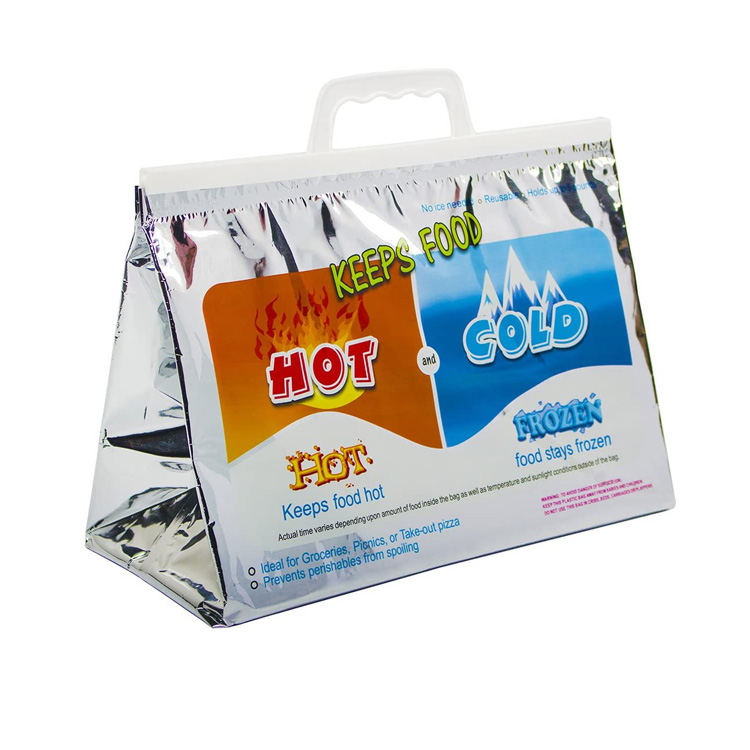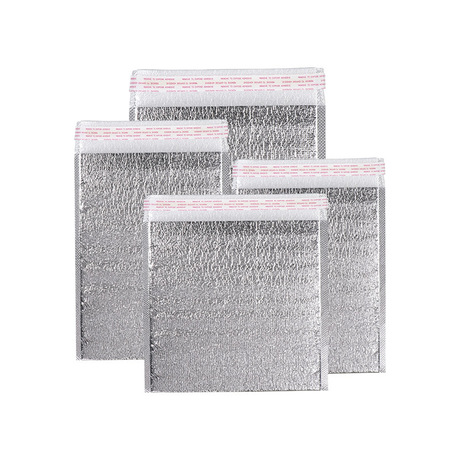When discussing the transportation packaging of cold chain products, one of the most commonly mentioned cooling agents is water ice, which has a freezing point of 0°C. It is the most economical and widely used cooling agent in fresh produce transportation. Today, let’s delve into the science behind why ice maintains the same temperature as it melts. أولاً, let’s explore some fundamental concepts:
1. What is Molecular Dynamics?
Molecular Dynamics (MD) is a computational simulation technique used to study and predict the physical motion and behavior of molecular systems. By numerically solving Newton’s equations of motion, MD simulations describe how molecules evolve over time. The basic principle is rooted in classical mechanics, where the interactions and trajectories of particles (such as atoms and molecules) are calculated to predict the system’s temporal evolution. MD is also used to study phenomena like phase transitions and heat transfer.

2. What is Molecular Thermodynamics?
Molecular Thermodynamics is a branch of thermodynamics that combines thermodynamic theory with molecular physics, focusing on the thermodynamic properties and behaviors of systems at the molecular level. By understanding the interactions between molecules and atoms, molecular thermodynamics can explain and predict macroscopic thermodynamic phenomena. Here are some key points:
- Thermodynamics: The study of energy, heat, and matter in a system and how they transform and transfer.
- Molecular Physics: The study of the properties, structures, and interactions of molecules and atoms.
- Objective: To explain and predict macroscopic thermodynamic phenomena, such as phase transitions, chemical reactions, and thermodynamic equilibrium, using molecular-level information.
Applications include:
- Chemical Reaction Thermodynamics: Studying equilibrium constants and changes in free energy during chemical reactions.
- Phase Transitions: Understanding and predicting the conditions and properties of substances as they change from one phase (solid, liquid, gas) to another.
- Solution Thermodynamics: Studying the properties of mixtures, solubility, vapor pressure, وأكثر.
- Materials Science: Predicting the thermodynamic properties and stability of new materials.
3. Microscopic Perspective of Water Freezing and Melting
The transition of water from liquid to solid (ice) and then back to liquid involves changes in molecular interactions and arrangement at the microscopic level. Here’s a detailed look at this process:
Freezing Process (Liquid to Solid):
- Molecular Movement Slows Down: As the temperature drops, the kinetic energy of water molecules decreases, causing them to move more slowly.
- Hydrogen Bond Formation: The hydrogen bonds (H-O-H) between water molecules become more stable, and the molecules start arranging themselves more orderly.
- Crystal Structure Formation: When the temperature falls below 0°C, water molecules arrange into a regular hexagonal lattice structure, forming ice. This structure makes ice less dense than liquid water, causing it to float.
- Energy Release: During freezing, as water molecules arrange into a lattice structure, latent heat (also known as the heat of fusion) is released because the potential energy between molecules decreases.
Melting Process (Solid to Liquid):
- Molecular Movement Speeds Up: As the temperature rises, the water molecules in ice gain more kinetic energy, causing more vigorous movement.
- Hydrogen Bond Breaking: Some hydrogen bonds begin to break, disrupting the orderly crystal lattice structure of the ice. As more hydrogen bonds break, the ice lattice gradually collapses, and water molecules become more random and disordered.
- Energy Absorption: During melting, ice absorbs latent heat (also known as the heat of fusion), which increases the potential energy between molecules, allowing them to move more freely. When enough hydrogen bonds break, ice fully transforms into liquid water, where the molecules move randomly but still form some transient hydrogen bonds.
4. Factors Influencing Hydrogen Bond Formation in Water Molecules
The formation and stability of hydrogen bonds between water molecules are influenced by several factors:
- Temperature:
- Increasing temperature raises the kinetic energy of water molecules, making hydrogen bonds more prone to breaking, thus reducing their number.
- Lowering temperature decreases kinetic energy, stabilizing hydrogen bonds and making them more likely to form, especially near or below the freezing point.
- Pressure:
- High pressure brings water molecules closer together, promoting hydrogen bond formation.
- Low pressure may increase the distance between molecules, reducing the number of hydrogen bonds.
- Presence of Solutes:
- Electrolytes: Salts can disrupt hydrogen bonds by forming ion-dipole interactions with water molecules, interfering with the hydrogen bonding network.
- Non-Electrolytes: Substances like sugars, while not breaking hydrogen bonds, can form new hydrogen bonds with water molecules, altering the existing structure.
- pH Value:
- Extreme pH levels (very low pH—strongly acidic—or very high pH—strongly alkaline) can affect hydrogen bond formation because H⁺ or OH⁻ ions interact with water molecules, altering the hydrogen bond network.
- External Fields:
- Strong electric or magnetic fields can influence the polarity of water molecules, thus affecting the formation and stability of hydrogen bonds.
- Molecular Structure:
- The inherent structure of water molecules, such as their angle and polarity, is fundamental to hydrogen bond formation. Any factor that changes this structure will impact hydrogen bonding.
- Physical State:
- Phase changes, such as from liquid to solid (ice), make hydrogen bonds more ordered and stable; from liquid to gas (steam), hydrogen bonds break.

5. Microscopic Explanation of Why Water’s Temperature Remains Constant During Melting
From a microscopic perspective, the phenomenon of water maintaining a constant temperature during melting can be explained by energy conversion and molecular interactions. This involves the concept of latent heat (also known as hidden heat). Here’s a detailed explanation:
- Energy Absorption and Hydrogen Bond Breaking:
- Hydrogen Bond Presence: In the solid structure of ice, water molecules form an orderly hexagonal lattice through hydrogen bonds, fixing the molecules in specific positions.
- Temperature Rising to Melting Point: As ice is heated, the kinetic energy of the water molecules increases. لكن, before reaching 0°C (the melting point of ice), this energy primarily increases the amplitude and frequency of molecular motion, not breaking the hydrogen bonds.
- Latent Heat Absorption: Upon reaching 0°C, the absorbed heat no longer increases the kinetic energy of the molecules (i.e., it does not raise the temperature). بدلاً من, it is used to break the hydrogen bonds between water molecules. This absorbed energy is known as “latent heat” or “heat of fusion.”
- Breaking Hydrogen Bonds: The latent heat is used to overcome the hydrogen bonds, freeing the water molecules from their orderly lattice structure and transforming them into disordered liquid water.
- Reason for Constant Temperature:
- Heat Used for Phase Change: During melting, all the added heat is used to break hydrogen bonds rather than increase the kinetic energy of the molecules. As a result, the temperature of the water remains constant at 0°C until all the ice has turned into liquid.
- Heat Balance: Only after all the ice has completely melted does continued heating increase the temperature of the liquid water, as the latent heat required for the phase change has already been absorbed.
Summary:
- Latent Heat: The heat absorbed during melting is used to break hydrogen bonds, not to raise the temperature.
- Phase Change Process: The temperature remains constant because the heat is consumed in the phase transition from solid (ice) to liquid (water).
- Molecular Motion: Breaking hydrogen bonds requires energy, which comes from absorbed heat but does not immediately translate into a temperature increase.
6. Practical Applications of Constant Temperature During Water Melting
The principle that water maintains a constant temperature during melting due to latent heat absorption has numerous practical applications that bring significant convenience and benefits to our daily lives. Here are some specific examples:
- Food Preservation and Refrigeration:
- Refrigerators and Freezers: Freezers in refrigerators maintain a stable temperature by keeping ice present. When ice begins to melt, it absorbs heat without raising the temperature, helping to keep the freezer temperature stable and effectively preserving food.
- Cold Chain Transport: In cold chain transport, ice or dry ice (solid carbon dioxide) is used to maintain low temperatures. كما يذوب الجليد, it absorbs heat, ensuring that the temperature does not rise during transport, thereby extending the freshness of food.
- Medical Uses:
- Cold Compresses and حزم الثلج: Cold compresses and ice packs are commonly used to relieve sports injuries or inflammation. The melting ice in the ice packs absorbs heat, effectively reducing local temperature, and alleviating swelling and pain.
- Outdoor Activities:
- Picnics and Camping: During outdoor activities like picnics or camping, ice is often used to keep food and drinks cool. كما يذوب الجليد, it absorbs heat, ensuring that food and beverages remain cool for a longer period.
خاتمة: The principle that water’s temperature remains constant during melting, due to its heat absorption properties, provides significant benefits in food preservation, medical cold compresses, ice production, وأكثر.
























